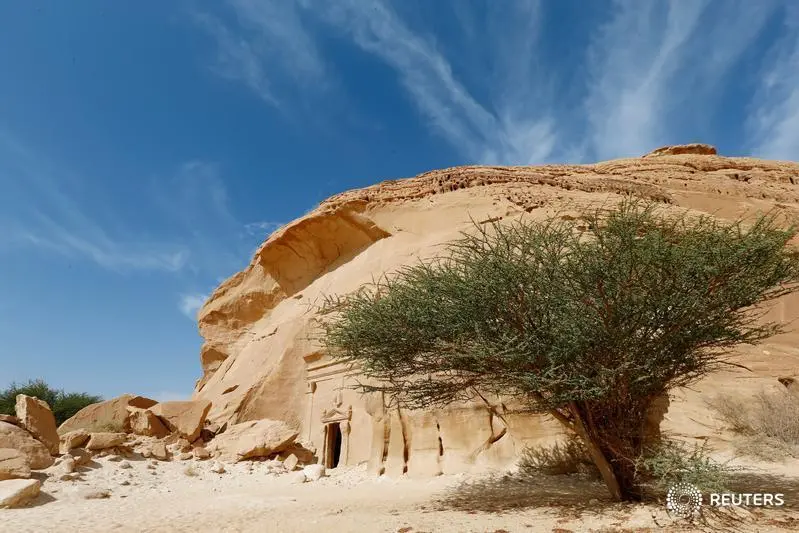PHOTO
The 14th-century Arab traveler Ibn Battuta described AlUIa as a beautiful, large village that has palm groves and water resources.
In modern times, AlUla is also the name of the surrounding region, and this unique destination is finally unveiling its rich heritage to the world. Located in Saudi Arabia’s northwest, AlUla is an extraordinary example of the Kingdom’s wonderful culture and deep-rooted history. As a place of exceptional human endeavor, visitors to AlUla are immersed in a capital of ancient civilizations.
Archaeological research in Saudi Arabia reveals sites more than 1 million years old. Here in AlUla, recent discoveries chart more than 200,000 years of human history. Evidence of settlements can be traced back to 5,000 years BCE, when previously nomadic Bedouin tribes started to lay down roots, routines and traditions, making AlUla their permanent home.
AlUla was once a vital crossroads along the famous incense-trading routes running north from southern Arabia into Egypt and beyond. Today, through a diverse offering of heritage, nature, arts and culture, and adventure tours, AlUla is a year-round boutique and fascinating tourist destination.
Hegra is Saudi Arabia’s first UNESCO World Heritage Site and is one of four main heritage sites for visitors to discover. Best known for its remarkably well-preserved tombs — 111 to be precise, of which 94 have elaborately carved facades — Hegra was established 3,000 years ago by the Nabataean kingdom.
Today, visitors can tour the site with a “rawi,” the name given to a special group of local guides who not only offer fascinating insights into the sites and the people who lived there, but also stories from their own family history and the AlUla community.
The ancient capital of Dadan is another of AlUla’s sites that is now open for tourism. Archaeologists still have much to uncover about this city, which dates back to the 9th century BCE and was the capital of the kingdom of Dadan before the Lihyanites took over and made their presence known by erecting colossal statues of their kings.
Jabal Ikmah, near Dadan, has been termed the “open-air library” and is home to more than 500 inscriptions, written in the precursors to Arabic, as well as scripts from other civilizations, including Aramaic, Palmyrene, Greek and Latin. Many of the writings help to shed light on ancient beliefs and practices. One can feel the presence of the ancient people who shared their stories via these rocks, and it is these inscriptions that have earned Jabal Ikmah the unofficial name of “the whispering canyons.”
As of February this year, visitors will also be able to access AlUla Old Town. An active restoration project, AlUla Old Town is located in the narrowest part of the AlUla valley and is looked down on by AlUla Castle, a citadel dating to at least the 10th century.
Continuously occupied from the 12th century until the 1980s, the settlement, with its mud brick houses, intricate urban pattern, outstanding fort, and the remains of its arts and crafts, is of tremendous historical significance.
At present, more than 900 properties have been identified, including 400 shops and five “rahbas,” or town squares. A path through the town has been carefully restored, allowing visitors to experience for themselves what living in AlUla Old Town would have been like.
Outside of the heritage sites, the unique rock formations dotting the desert landscape, as well as the lush, green oasis, make AlUla a nature lover’s dream destination. The AlUla region offers some of the most beautiful and unique landscapes in the world. Throughout this stunning desert, you will discover sand-drifted canyons, red-rock cliff faces and unique outcrops and rock formations — all surrounded by vast expanses of desert sand. These imagination-spurring rock formations — which have, over time, developed names like “Elephant Rock,” “Face Rock,” “the Dancing Rocks,” and “Rainbow Rock” — add to the wonder of AlUla.
Excitingly, there is now an increasing range of guided tours available, allowing visitors to fully appreciate this stunning landscape. We have hiking trails with options of desert or oasis, a cycling trail, and stargazing or moonlit night-time experiences. As of this month, our new bike park will be operational, along with zip line and buggy experiences.
A unique place like AlUla attracts a unique group of artists and creatives, and it would be remiss not to mention some of the more recent wonders of AlUla. The concert hall known as Maraya, which means mirrors in Arabic, is an architectural masterpiece. This multi-purpose entertainment venue in the Ashar Valley was designed by Italian architects Gio Forma and is at the center of AlUla's world-class events ambitions. Wrapped in mirrors to simulate a dazzling desert mirage, it is the world’s largest mirrored building, according to Guinness World Records.
Having already hosted the likes of Lionel Richie, Andrea Bocelli and a conference of Nobel Prize laureates, it is here that the Saudi Royal Court decided to hold the 2021 GCC leaders’ summit on Jan. 5. AlUla is delighted to have been chosen to welcome the region’s leaders for this important event. This will be the first of many auspicious gatherings of minds in AlUla, as meetings, incentives, conferencing and exhibitions (MICE) organizers will be drawn to the rich history of AlUla as a place of human ingenuity and cultural exchange for millennia.
• Phillip James Jones is Chief Destination Marketing Officer, Royal Commission for AlUla.
Copyright: Arab News © 2021 All rights reserved. Provided by SyndiGate Media Inc. (Syndigate.info).












